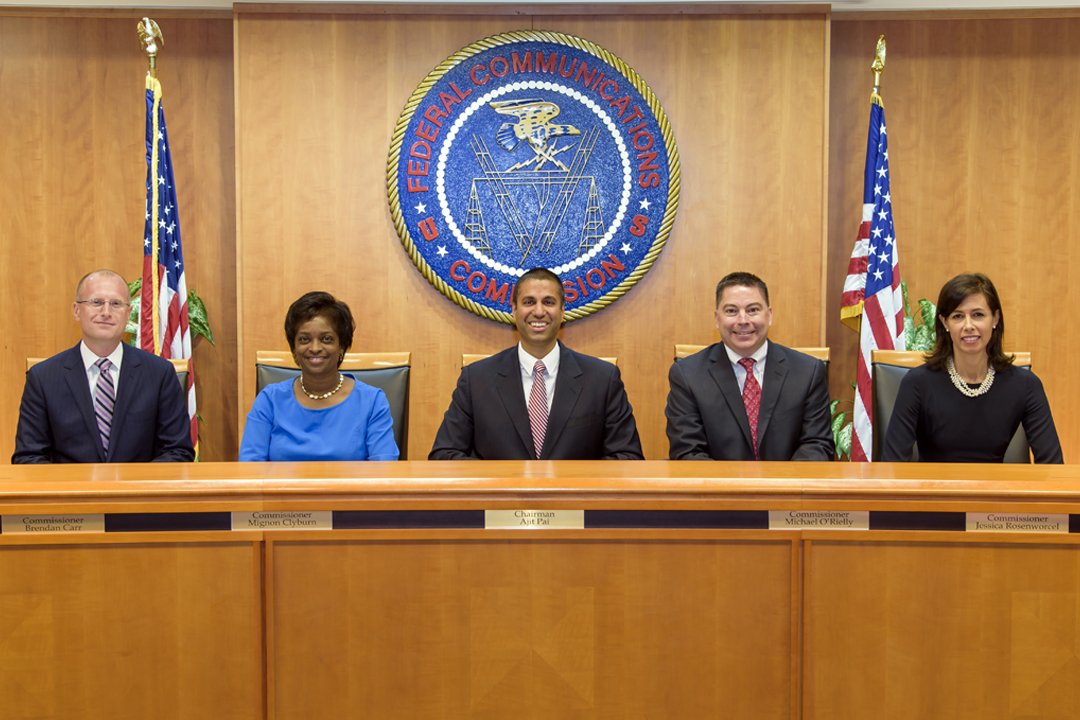Waging war on the poor
FCC changes will hit Indian reservations the hardestBy Kimberly Greager
Native Sun News Today Correspondent
nativesunnews.today PINE RIDGE RESERVATION - In the midst of Native American Heritage month, the Federal Communications Commission (FCC) approved changes to the Lifeline program that will hit people who live on Indian reservations the hardest. “The majority proclaims that the item is all about bridging the digital divide and has boldly labeled this item as such. But, this proposal does nothing to make the lives of those who qualify better, and no amount of Orwellian doublespeak in the docket’s title will suggest otherwise. Make no mistake: this is the ‘Widen the Digital and Opportunity Divide’ item,” FCC Commissioner Mignon L. Clyburn, who voted against the reform, said in her dissent statement. FCC Chairman Ajit Pai’s program “reform” plan, titled ‘Bridging the Digital Divide for Low-Income Consumers: Fourth Report and Order, Order on Reconsideration, Memorandum Opinion and Order, Notice of Proposed Rulemaking, and Notice of Inquiry,’ passed in a 3-2 vote. The plan will implement some immediate changes to who is eligible for the Tribal Lifeline subsidy of $25 a month, and includes the new requirement of independent verification by providers of a subscriber’s tribal residency, as well as proposing future changes to the Lifeline program. Those in favor of the Lifeline reform say it will help reduce waste, fraud and abuse as well as expand communications networks. Critics of the plan vehemently disagree. Lifeline began in 1985 to improve telephone access to low-income households by providing subscribers a monthly subsidy for their telephone service. Mobile service was added in 2005, and broadband was added in 2016. Currently, Lifeline subscribers get a $9.25 monthly subsidy, and subscribers on tribal lands get an additional $25 monthly Tribal Lifeline subsidy. Across the country, 12.5 million people use Lifeline, with about 500,000 of those subscribers living on tribal lands, and approximately 9,000 living in South Dakota. Major changes taking place in about 90 days will particularly impact Lifeline subscribers who receive the $25 Tribal Lifeline subsidy. Under the reform, the monthly $25 subsidy will only be available to subscribers on “rural” tribal lands. According to the order, “To identify rural areas on Tribal lands, we adopt the definition of “rural” used in the E-rate program rules, which define “urban” as “an urbanized area or urban cluster area with a population equal to or greater than 25,000.” We define all other areas as “rural.” Using the E-rate definition of “rural” to identify Tribal areas that are eligible for enhanced support would ensure that the enhanced support is available for Tribal lands in these small towns and remote areas where supported services are more costly.” In addition, the $25 Tribal Lifeline subsidy will only be available to wireless subscribers who use facility-based providers, meaning providers that own their own towers. This means that subscribers who use Mobile Virtual Network Operators (MVNOs) such as StraightTalk, Tracfone, Cricket, etc., will no longer be eligible for the $25 Tribal Lifeline subsidy. This will limit customers to the four major carriers – Verizon, AT&T, T-Mobile or Sprint. With limited T-Mobile coverage and virtually no Sprint coverage in South Dakota, Lifeline subscribers in South Dakota will be left with little or no choice on where they get their wireless service. Even with the Lifeline subsidies, the higher cost of the major carriers will be unaffordable for many current Lifeline users. An estimated 70% of Lifeline users use MVNOs to get their service. The reform plan also proposes to limit the regular Lifeline subsidy to broadband service providers who are facility-based as well. Commissioner Clyburn said in her dissent statement, “The impact of these actions and proposed actions will be severe, but the actions themselves are heartless…Over 70% of wireless Lifeline consumers will be told they cannot use their preferred carrier and preferred plan, and on top of that, they may not have a carrier to turn to after that happens. And just where is the analysis of where these customers will go, or how we can ensure that they continue to be able to afford connectivity? The item contains no analysis of this sort. And at a time when eligible telecommunications carriers are actively relinquishing their designations, or have elected forbearance from the obligation to provide Lifeline service, just where will these consumers turn?” The other opposing member, Commissioner Jessica Rosenworcel, said this in her dissent statement, “The future belongs to the connected. No matter who you are or where you live you need access to modern communications to have a fair shot at 21st century success… Instead of consulting with Tribal authorities about changes to Lifeline that impact native communities, we hang up on the least connected…This is not real reform. This is cruelty. It is at odds with our statutory duty. It will do little more than consign too many communities to the wrong side of the digital divide. I dissent.” Many other people have vocalized their opposition to the Lifeline reform, saying it wages a war on the poor and implying it is racist.
NATIVE SUN NEWS TODAY
Support Native media and read the rest of the story on Native Sun News Today: Waging war on the poorJoin the Conversation


